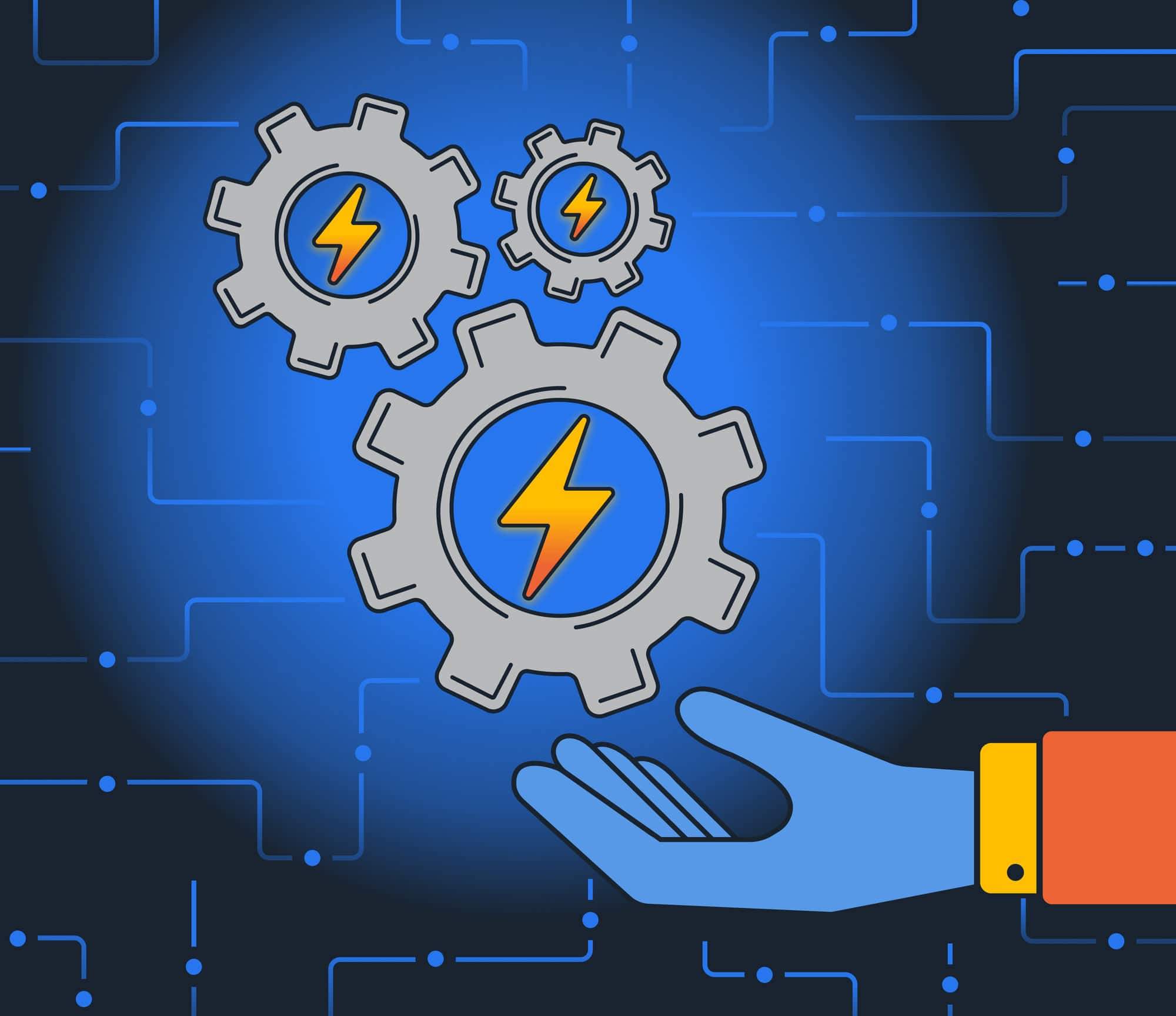
Now that we’ve discussed why human-centered design is a necessary prerequisite for transformation within the energy industry, let’s dive into another topic that is just as critical… systems thinking.
Similar to how human-centered design considers the needs of the people using a piece of software, systems thinking looks at any complex problem as a part of a larger system. Systems thinking recognizes that components in a system are often best understood within the context of their relationships, not in isolation.
A Crucial Lens
Systems thinking is a holistic approach that recognizes the intricate and interconnected nature of organizations and systems. When we embark on software transformations, it is imperative to consider the broader context in which these changes occur. Often, traditional software design tends to be reductive, and tries to isolate systems or focus too narrowly on the task at hand. This can lead to neglect of the broader ecosystem of processes, departments, and people.
In order to drive systems thinking, you have to think about things in a slightly different way:
- Take a more holistic view – Do you have a map of the ecosystem in which you are operating?
- Look for relationships – Where do the outputs of this process go? Where do the inputs come from? How will my changes affect those other systems?
- Consider time – Effects rarely ripple through a complex system instantaneously, consider how changes will affect the system over time.
- Identify feedback loops – Where do outputs from one part of the system serve to reinforce or balance other parts of the system? How can those effects amplify over time?
- Get comfortable with ambiguity – Complex systems are often challenging to reason about, sometimes you have to make small adjustments and evaluate.
If you work in an electric utility, you understand better than most just how interconnected systems can be, since you work daily within one of the most complex systems ever created. Every piece of the system affects everything else, and a small change in one area can ripple throughout the entire system. We need to take this same awareness with us when we are approaching our own digital transformations.
You Need a Microscope and a Telescope
Too often, software designers concentrate solely on the immediate needs of the users sitting in front of them, inadvertently overlooking the broader impact on organizational output and efficiency. This narrow approach can result in software that may solve a problem at one level, but cause problems for the organization as a whole.
Don’t get me wrong, it’s important to analyze user requirements under a microscope. But it is of equal importance to then use a telescope and look throughout the organization.
As an example, imagine you’re developing a new long-term planning tool to help streamline the operations for the team. You’ve talked to the team members, understood their needs, and designed a solution that meets those needs. Unbeknownst to you, the old spreadsheet that the team used to manage projects had been integrated into another team’s workflow. Had you mapped the ecosystem and considered the teams that were using the output from this team, you could have found and talked to that team to understand their needs as well.
Focusing on Systems Thinking
Putting an emphasis on systems thinking, and giving your team the tools and encouragement to broaden their outlook and context, will save a ton of time and energy in the long run. At the time it can feel like wasted effort, “Why are we mapping the ecosystem, we’re just trying to build a solution for X?!” And while it is important to constrain the effort, a small amount of consideration of the ecosystem and relationships can pay off in droves.
Sometimes, no matter how hard you dig, it isn’t always possible to suss out the second-order or third-order effects of changes you’re making in the system. When systems have enough moving parts, it can be near impossible to understand how one change will affect another part of the system. This is what makes iteration and experimentation so important, which is the next topic of discussion for the Energy Transformation Series.
Loved the article? Hated it? Didn’t even read it?
We’d love to hear from you.

